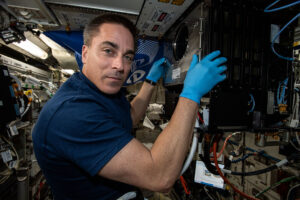One Piece Flow is a Lean manufacturing method that has gained popularity in recent years due to its ability to improve efficiency, reduce waste, and increase quality.
In this blog post, we will explore the key principles and benefits of One Piece Flow, as well as discuss how to implement it in your manufacturing process.
We will also examine the conditions necessary for successful implementation, as well as the limitations and situations in which One Piece Flow may not be suitable.
By the end of this post, you will have a comprehensive understanding of One Piece Flow and how it can revolutionize your manufacturing process.
Table of Contents
Definition
One Piece Flow is a Lean manufacturing method that involves producing one item at a time and moving it to the next stage in the process immediately, without creating any excess inventory.
Unlike traditional batch processing, where multiple items are produced and moved in large batches, One Piece Flow focuses on producing a single product at a time.
Why use one piece Flow?
One Piece Flow offers several benefits to manufacturing businesses. These benefits include:
- Improved Efficiency: One Piece Flow eliminates the need for large batches of production, which can cause delays and bottlenecks in the manufacturing process. By producing one item at a time, One Piece Flow allows for a more efficient and streamlined production process.
- Reduced Waste: One Piece Flow minimizes the amount of excess inventory that is produced, reducing waste and improving overall efficiency. It also helps to reduce defects and rework by catching errors early on in the production process.
- Increased Quality: By producing one item at a time, One Piece Flow allows for more frequent quality checks and inspections. This results in a higher overall level of quality in the final product.
Real-life Examples
Several businesses have successfully implemented One Piece Flow and have seen significant benefits as a result. For example:
- Toyota: Toyota is one of the most well-known companies to have successfully implemented One Piece Flow. By adopting this Lean manufacturing method, Toyota was able to reduce the time it took to produce a vehicle from 50 hours to just 18 hours, while also reducing inventory levels by 90%.
- Herman Miller: Herman Miller, a furniture manufacturer, implemented One Piece Flow and was able to increase production capacity by 25%, reduce lead times by 75%, and reduce inventory levels by 70%.
- Boeing: Boeing, the aircraft manufacturer, implemented One Piece Flow in its 737 production line and was able to reduce the time it took to assemble a plane from 11 days to just 3 days.
These examples demonstrate the significant benefits that One Piece Flow can offer to manufacturing businesses, including improved efficiency, reduced waste, and increased quality.
How to implement One piece flow?
Here are the key steps involved in implementing One Piece Flow:
#Step1 Define the process
The first step in implementing One Piece Flow is to define the manufacturing process. This involves identifying the individual steps involved in producing the product and the sequence in which they occur.
#Step 2 Identify waste
The next step is to identify areas of waste in the process. This includes looking for bottlenecks, inefficiencies, and non-value-added activities that can be eliminated or streamlined.
#Step 3 Map the process
Once the process has been defined and waste has been identified, it’s time to create a process map. This map should clearly show the flow of materials and information through the process, including workstations and any necessary equipment.
#Step 4 Calculate takt time
Takt time is the rate at which the product needs to be produced to meet customer demand. Calculating takt time is an essential step in implementing One Piece Flow, as it helps to determine the necessary cycle time and production rate.
The takt time formula is:
Takt time = Available production time per day / Customer demand per day
This formula calculates the rate at which products must be produced to meet customer demand. It takes into account the available production time (in minutes, hours, or shifts) and the customer demand (in units per day). The result is the time required to produce one unit of the product to meet the customer demand.
For example, if a manufacturing plant operates for 480 minutes per day and the customer demand is 240 units per day, the takt time would be:
Takt time = 480 minutes / 240 units = 2 minutes per unit
This means that the plant would need to produce one unit of the product every 2 minutes to meet customer demand. The takt time can then be used to calculate the necessary cycle time and production rate required for One Piece Flow.
#Step 5 Implement standard work
Standard work involves creating a standardized process that defines the specific steps and sequence of tasks required to produce the product. This includes establishing standard work times, quality checks, and training employees to perform the tasks efficiently and consistently.
#Step 6 Implement pull production
One Piece Flow requires a pull production system, where production is based on customer demand rather than push production, where production is based on a predetermined schedule. Implementing pull production involves creating a system for tracking customer demand, scheduling production based on that demand, and adjusting production as necessary.
#Step 7 Continuous improvement
One Piece Flow is a continuous improvement process, and it’s essential to regularly monitor and analyze the process to identify areas for improvement. This includes analyzing performance metrics, identifying bottlenecks or areas of waste, and making adjustments to the process as needed.
By following these steps, businesses can successfully implement One Piece Flow and enjoy the benefits of a lean manufacturing process that improves efficiency, reduces waste, and increases quality.
What are the conditions for implementing One Piece Flow?
Implementing One Piece Flow requires certain conditions to be met to ensure its success. These conditions include:
A stable process
One Piece Flow requires a stable process with minimal variability. This means that the process should be well-defined and repeatable, with little room for error or variation.
Standardized work
Standardized work is critical to the success of One Piece Flow. Each step in the process should be clearly defined and documented, with specific instructions on how to perform each task.
Leveling
Leveling is the process of smoothing out production to ensure a consistent flow of work. This involves balancing the workload across different workstations and ensuring that each workstation has the necessary resources and equipment to perform its tasks.
Minimizing changeovers
Changeovers, or the process of switching from one product to another, can disrupt the flow of One Piece Flow. To minimize changeovers, businesses should focus on producing products with similar production requirements and ensuring that changeovers are quick and efficient.
What are the characteristics of One Piece Flow?
One Piece Flow has several characteristics that make it a valuable Lean manufacturing method. These include:
- Flow: One Piece Flow is all about creating a smooth and continuous flow of production, with each item moving seamlessly from one stage to the next.
- Pull-based: One Piece Flow is based on a pull system, where production is driven by customer demand. This means that items are only produced when they are needed, minimizing waste and excess inventory.
- Takt time: One Piece Flow is designed to meet the takt time, which is the rate at which items need to be produced to meet customer demand. By producing one item at a time, One Piece Flow ensures that production is always aligned with customer demand.
- Continuous improvement: One Piece Flow encourages continuous improvement by focusing on reducing waste, improving efficiency, and increasing quality.
One Piece Flow is considered a Lean manufacturing method because it aligns with the key principles of Lean manufacturing, such as minimizing waste, maximizing efficiency, and focusing on customer value.
By producing one item at a time, One Piece Flow helps to reduce excess inventory, minimize waiting times, and improve overall production flow. This results in a more streamlined and efficient manufacturing process that is focused on delivering value to the customer.
What are the Challenges and Solution to One Piece Flow?
Common Challenges
Implementing One Piece Flow can be challenging, and businesses may face several common challenges, including:
- Resistance to change: Employees may be resistant to change, especially if they are used to working in a batch processing environment. To overcome this challenge, businesses should provide clear communication and training to employees on the benefits of One Piece Flow and how it will improve their work environment.
- Lack of resources: One Piece Flow requires a significant investment in resources and equipment, which may be a challenge for some businesses. To overcome this challenge, businesses should prioritize which workstations are most critical and focus their resources on those areas.
- Variability: Variability in the production process can disrupt the flow of One Piece Flow. To minimize variability, businesses should focus on standardizing work processes and reducing variability in raw materials and equipment.
Solutions
To overcome these challenges, businesses should take a systematic approach to implementing One Piece Flow.
This may involve conducting a thorough analysis of the production process, identifying areas for improvement, and implementing small changes over time.
Additionally, businesses should prioritize clear communication, employee training, and a willingness to continuously improve the process.
When Does One Piece Flow not work?
While One Piece Flow is a powerful Lean manufacturing method, there are situations where it may not be the best approach. Here are some scenarios where One Piece Flow may not work:
- High volume production: One Piece Flow may not be practical for high-volume production, where the volume of products is too high for a single unit to be produced at a time. In such cases, continuous flow or batch production may be a better fit.
- Highly customized products: One Piece Flow may not be suitable for highly customized products, where each product requires a unique set of processes and materials. In such cases, a batch production or job shop approach may be more appropriate.
- High variability in customer demand: One Piece Flow requires a stable process with predictable customer demand. If customer demand varies significantly or unpredictably, it can lead to overproduction, underproduction, or wasted resources.
- Complex processes: One Piece Flow may not be suitable for processes that are highly complex, require specialized skills or equipment, or involve a large number of steps. In such cases, batch production or other approaches may be better suited.
- Limited space: One Piece Flow may require a lot of space to set up a continuous flow production line. If space is limited, it may not be practical to implement One Piece Flow.
In summary, while One Piece Flow is a powerful Lean manufacturing method, it’s important to evaluate the suitability of the approach based on the specific production requirements and constraints of the business.
Why does one piece flow faster?
One Piece Flow is designed to optimize the production process by reducing waste, improving quality, and increasing efficiency. Here are some reasons why One Piece Flow can be faster than other manufacturing methods:
- Reduced waiting times: In traditional manufacturing methods, products may spend a lot of time waiting in between steps as they move through the production process. With One Piece Flow, products move continuously from one step to the next without waiting, resulting in reduced lead times and faster production.
- Improved quality: One Piece Flow reduces the risk of defects and errors by catching issues early and addressing them before they can cause delays or rework. This improves quality and reduces the need for additional production steps or inspections, which can slow down the process.
- Smaller batches: One Piece Flow often involves producing smaller batches of products, which can reduce lead times and improve production speed. This is because smaller batches can be completed faster and are less likely to experience delays or issues compared to larger batches.
- Simplified processes: One Piece Flow encourages a simplified and streamlined production process with fewer steps, which can reduce the time and effort required to produce each unit. By eliminating unnecessary steps and focusing on value-added activities, One Piece Flow can improve production speed.
Overall, One Piece Flow can be faster than other manufacturing methods due to its focus on continuous flow, quality improvement, and waste reduction. By optimizing the production process and reducing lead times, One Piece Flow can help businesses produce products faster and more efficiently.
One Piece flow vs Continuous Flow
One Piece Flow and Continuous Flow are both Lean manufacturing methods that aim to optimize production processes and reduce waste. While they have some similarities, there are also some key differences between the two approaches.
One Piece Flow involves producing a single unit at a time, with each unit moving continuously through the production process from start to finish. The goal is to eliminate waste, reduce lead times, and improve quality by focusing on continuous flow and reducing variability.
Continuous Flow, on the other hand, involves producing a large quantity of products without interruption, with each product moving through the production process at a set rate. The goal is to maximize efficiency and productivity by minimizing downtime and reducing the need for setup or changeover times.
Here are some key differences between One Piece Flow and Continuous Flow:
- Batch size: One Piece Flow produces one unit at a time, while Continuous Flow produces larger batches of products. One Piece Flow often involves smaller batch sizes to minimize lead times and reduce the risk of defects.
- Process steps: One Piece Flow focuses on reducing the number of process steps and eliminating waste, while Continuous Flow aims to maximize efficiency by minimizing downtime and reducing setup times.
- Equipment: One Piece Flow often requires specialized equipment designed to handle smaller batches and facilitate continuous flow. Continuous Flow, on the other hand, may require larger, more specialized equipment to handle high-volume production.
- Flexibility: One Piece Flow is more flexible and can accommodate changes in demand or product mix more easily than Continuous Flow, which may require significant retooling or setup times to switch to a different product.
Overall, One Piece Flow and Continuous Flow are both effective Lean manufacturing methods, but they have different strengths and weaknesses depending on the production requirements of a given business.
What are the benefits of One Piece Flow?
One Piece Flow is a Lean manufacturing method that offers many benefits, including:
- Reduced lead times: By producing one unit at a time and continuously moving it through the production process, One Piece Flow minimizes the time it takes to produce a product.
- Improved quality: By focusing on reducing waste and eliminating process variability, One Piece Flow can improve product quality and reduce defects.
- Increased efficiency: One Piece Flow eliminates the need for large batches and reduces the time and effort spent on setup and changeovers, resulting in increased efficiency.
- Reduced inventory: By producing products only when they are needed and in the exact quantities required, One Piece Flow reduces the amount of inventory on hand, which can reduce costs and increase cash flow.
- Improved flexibility: One Piece Flow enables businesses to respond quickly to changes in demand or product mix, as it requires less setup time and can accommodate a wide range of products.
- Increased employee engagement: One Piece Flow can help to engage employees by involving them in the continuous improvement process, promoting teamwork and collaboration, and providing opportunities for skill development.
- Better customer satisfaction: One Piece Flow can improve customer satisfaction by reducing lead times, improving quality, and ensuring products are delivered on time.
Overall, One Piece Flow can help businesses to improve their production processes, reduce waste, and increase efficiency, which can lead to better customer satisfaction, increased profitability, and a more sustainable business.
What are the limitations of One Piece Flow?
While One Piece Flow offers many benefits, there are also some limitations to consider. These include:
- Equipment requirements: One Piece Flow may require specialized equipment designed for small batches, which can be expensive to purchase and maintain.
- Process complexity: One Piece Flow may not be suitable for complex or highly variable processes, as it requires a high degree of process stability and predictability.
- Workforce skills: One Piece Flow requires a skilled workforce that is trained in multiple tasks and can quickly adapt to changes in the production process.
- Upfront investment: Implementing One Piece Flow may require a significant upfront investment in training, equipment, and process design.
- Capacity constraints: One Piece Flow may not be suitable for high-volume production, as it can be time-consuming to produce each unit individually.
- Limited product mix: One Piece Flow may not be suitable for businesses that require a high degree of product variability, as it is designed to produce one product at a time.
- Risk of interruptions: One Piece Flow can be interrupted by unexpected events, such as machine breakdowns or shortages of raw materials, which can cause delays and disrupt production.
Overall, while One Piece Flow can be an effective Lean manufacturing method for many businesses, it is important to consider the limitations and potential challenges before implementing it in your production process.
FAQ
Here are some frequently asked questions (FAQ) about One Piece Flow:
What is One Piece Flow?
One Piece Flow is a lean manufacturing method that involves producing products one piece at a time, in a continuous flow, with no interruptions or delays between steps.
How does One Piece Flow differ from batch processing?
One Piece Flow differs from batch processing in that it involves producing products continuously, one at a time, whereas batch processing involves producing a large quantity of products at once.
What are the benefits of One Piece Flow?
The benefits of One Piece Flow include reduced waste, improved efficiency, increased quality, enhanced flexibility, improved lead times, increased employee engagement, and better customer satisfaction.
What are the conditions for implementing One Piece Flow?
The conditions for implementing One Piece Flow include having a stable process, minimizing variability, ensuring that materials and tools are readily available, and having skilled and trained employees.
How do you implement One Piece Flow?
To implement One Piece Flow, you need to analyze the current process, create a plan, train employees, and continuously monitor and improve the process.
When does One Piece Flow not work?
One Piece Flow may not work in situations where there is high variability, long setup times, or where there are large differences in processing times between steps.
How does One Piece Flow compare to other lean manufacturing methods?
One Piece Flow is often compared to other lean manufacturing methods, such as batch processing, just-in-time (JIT), and continuous flow. One Piece Flow is considered to be a more efficient and effective method for producing products than batch processing, but may not be suitable for all situations.
Overall, One Piece Flow is a powerful lean manufacturing method that can help businesses to reduce waste, increase efficiency, and improve quality. By understanding the benefits, conditions, and implementation steps of One Piece Flow, businesses can create a more sustainable and successful manufacturing process.
Additional Resources
- Lean Enterprise Institute:https://www.lean.org/
- The Fabricator: – https://www.thefabricator.com
- Six Sigma Daily: https://www.sixsigmadaily.com/




